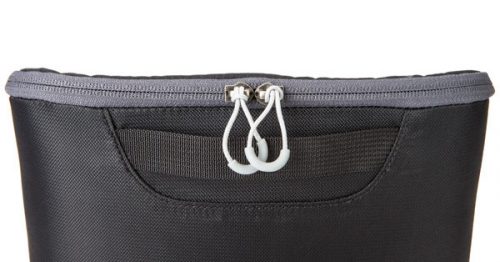When Nikon first announced their Nikkor 58mm f/1.4 lens back in 2013, many were confused about the ‘interesting’ choice in focal length and shocked by the initial $1700 USD sticker price (note that street price is considerably less than this now). Was this lens meant to replace or update the venerable 50mm f/1.4, and what on earth could make it worth nearly four times as much as that lens?
The answer can be found in looking back a few decades to the company’s legendary and even more expensive 58mm f/1.2 NOCT introduced in the 1970’s. That lens had an optical design that was intended specifically to reduce saggital flare or coma – undesirable characteristics that rears its head in low-light or astrophotography situations. While not officially designated a NOCT lens, this new 58mm f/1.4 maintains those qualities and in Nikon’s own words is “designed to excel in low-light and nighttime applications, but with characteristics that you’ll enjoy for so much more“.
It’s those ‘characteristics’ – including edge-to-edge sharpness at wide apertures, low light fall-off, and smooth transitions to out of focus areas – that make the lens unique, and form the foundation for why anyone would even consider its significant price premium.
The good folks at Nikon Canada were kind enough to lend me a copy of this unique lens, and I had planned to use it for a portrait project that I had lined up – an application that certainly fits with how many photographers would anticipate using the lens. Unfortunately, my photo subjects unexpectedly had to cancel and could only reschedule after my brief 58mm loaner period. Not wanting to waste an opportunity with this lens, I quickly pivoted and decided to explore the capabilities of the lens and take Nikon up on that “so much more” claim. Is it just a portrait or night lens, or can it earn its place in a generalist’s creative toolbox?
Holding and mounting the lens to my Nikon Z6, it felt light. This lent a surprisingly lower end feel in hand than you’d expect from pricey, large aperture glass – yet I very much appreciated this light weight when combined with the mirrorless Z6 body. Even with the necessary FTZ adapter, the entire package felt nimble and very easy to work with. It sure didn’t pack the mass of my D810 and an 85mm f/1.4.
So how does it perform? The lens is known for having unimpressive technical specs wide-open, at least on standard MTF charts. And in my experience that holds true, as it’s undeniably soft across the frame at f/1.4 or f/1.6. Centre-frame sharpness picks up noticeably at f/1.8 and becomes razor-sharp at f/2.0. So that’s where I ended up spending most of my time with the lens.
Depending on where you place your subject and subject distance from the camera, there’s a sweet spot in the f/2.0 to f/2.8 range where deliciously shallow depth of field is still possible, with zero tradeoffs on sharpness.
Wide-open, and even stopped down somewhat, I noticed not just the creamy bokeh that one would expect, but particularly smooth transitions from in to out of focus regions. The focal plane isn’t razor thin with instant detail obliteration on either side, but instead there’s a nice ‘shoulder’ zone that eases the viewer’s eye in and out. Combined with pleasing contrast and great colour saturation, the overall rendering near wide open is indeed rather painterly or impressionistic. It’s this magic ‘je ne sais quoi’ which doesn’t show up on technical charts that so many fans seem to appreciate about the lens.
I had a chance to explore the lens’ capabilities in a range of circumstances that I would normally shoot, and quickly grew accustomed to its somewhat quirky focal length when pre-visualising shots. While I hadn’t fully intended to test it out for astrophotography, and thus failed to pre-set and tape down infinity focus in the sample here, it still performed excellently in controlling coma, as expected, and has great edge-to-edge sharpness for at f/2.0.
I’ve shot with several other f/1.4 lenses over the years, but for whatever reason this one feels particularly special. It’s about more than just a wide aperture and taking in as much light as possible. This lens is unapologetic about its’ flaws – it’s soft wide open, often with noticeable chromatic aberration thanks to no ED elements, and of course vignetting – but still manages to produce images with a distinctly ‘artistic’ look to them, and delivers incredible sharpness when stopped down even moderately.
For landscapes, close-up nature photography (though admittedly, nowhere near macro or 1:1 enlargement ratio unless you use extension tubes), and even impromptu product photography in my studio space, the lens consistently delivered pleasing results and more than a few ‘wow’ moments.
Would I shell out full price for this lens brand new? Not at the moment, but that’s not fault of the lens and it doesn’t mean you shouldn’t. It’s a fun and uniquely creative piece of glass to shoot with, and would be a welcome addition to my kit at a later date, if and when the budget allows!



















well considered opinion, without excessive attention to unnecessary technical details. thank you.